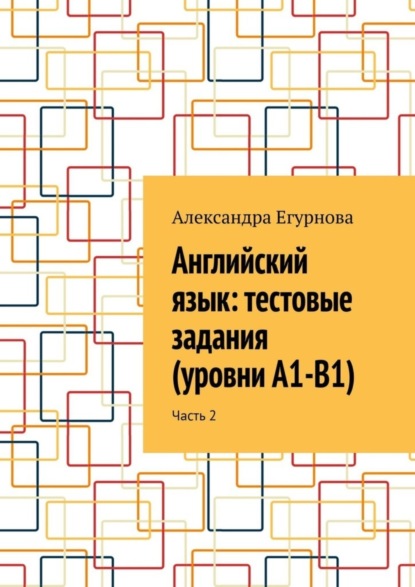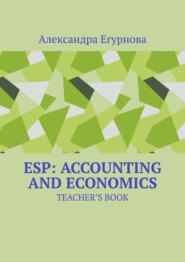По всем вопросам обращайтесь на: info@litportal.ru
(©) 2003-2024.
✖
Английский язык: тестовые задания (уровни А1-В1). Часть 2
Настройки чтения
Размер шрифта
Высота строк
Поля
Задание 2. Отнесите слова (1—10) к их типу чтения (А-E).
Задание 3. Напишите слова в алфавитном порядке.
Frog, snake, rain, monkey, yellow, dog, cat, elephant, train, lemon.
Задание 4. Вставьте в пропуски верное слово.
I look (1) … the people on the train. A mother and father (2) … with their children. (3) … boy is eating breakfast. The girl is reading (4) … book. A man (5) … front of me is reading a newspaper. I look at the words on the front (6) …. But I (7) … read them. The newspaper is (8) … Arabic, and I can’t read Arabic. Then I (9) … a photo. It (10) … a photo of the gold statue.
1) A at B for C on D to
2) A sit B sits C is sitting D are sitting
3) A a B an C the D —
4) A a B an C the D —
5) A at B in C on D with
6) A picture B paper C list D page
7) A can B can’t C not D am
8) A at B in C on D —
9) A see B am seeing C sees D is seeing
10) A am B is C are D —
Задание 5. Посчитай и напиши (одним словом, не цифрой).
1) Two + five =
2) Ten – three =
3) Five + five =
4) Six + seven =
5) Three + six =
6) One + seven =
7) Eleven – two =
8) Four + two =
9) Ten – five =
10) Six – one =
Тест 5
Задание 1. Напишите отрицательные [-] или вопросительные [?] предложения. Пример дан ниже под цифрой ноль (0).
0. I’m fine. [-]
I’m not fine.
He’s green. [?]
Is he green?
1) They’ve got a river boat. [?]
2) He’s Italian. [-]
3) It’s on the shelf. [?]
4) Linda’s got your ruler. [-]
5) We’re in the square. [?]
6) She’s got a white rabbit. [?]
7) The clouds are black. [-]
8) He’s got a green apple. [-]
9) Your cat’s name is Tom. [?]
10) Her hat’s blue. [-]
Задание 2. Соедините изображения фруктов (1—5) с их названиями на английском (А-Е).
Задание 3. Напиши слова, которым соответствует транскрипция. Пример дан под цифрой ноль (0).
Задание 4. Вставьте в пропуски верное слово.
Mary (1) … young. But her shoes (2) … old. She (3) … them to work. She goes (4) … work five days a week. She loves (5) … work. Mary works at (6) … restaurant. The restaurant (7) … near her home.
She stands (8) … all day long. She (9) … tired. Mary needs (10) … shoes.
1) A am B is C are D has
2) A am B is C are D were
3) A to wear B wear C wearing D wears







